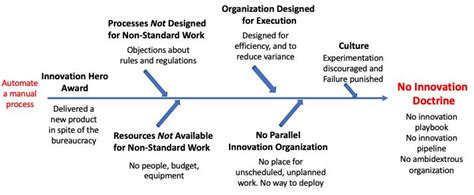In corporate environments, the term ‘innovation hero’ might seem commendable. It evokes images of individuals defying odds to bring significant advancements within their organizations. However, when an enterprise relies heavily on such innovation heroes, it often reflects deeper systemic dysfunctions rather than a thriving culture of innovation. As Nathan Compton pointed out, creating a meaningful ‘innovation doctrine’ could possibly shift the paradigm from hero-worship to sustaining long-term innovative processes, but the efficacy of such doctrines remains debatable.
Middle management often shoulders the brunt of the blame for stifling innovation, and it’s not entirely unjustified. These managers navigate their own challenges, balancing both top-down directives and ground-level realities. They might not always grasp the full benefit of proposed innovations or may rightly warn against the risks these innovations pose to timelines or budgets. As highlighted by one industry insider, even practical tools like Jira adoption in a government setting, can present a significant leap. This highlights how systemic inefficiencies can make even straightforward tasks cumbersome.
Take the aerospace industry as a case study, where innovation forums are encouraged. Employees submit ideas with promises of recognition or minor rewards. Yet, many suggestions remain unfunded and unexplored, particularly when budget holders are the very gatekeepers who would likely be impacted by them. This reflects a pervasive issue where ‘innovation’ is more of a buzzword than an actionable agenda. As keynotes shower management with repetitive adages like ‘Think outside the box,’ the actual budgeting efficiencies and compliance with legal mandates remain intertwined barriers to real progress.
Government agencies represent another convoluted front concerning innovation. Detractors, like OldGuyInTheClub, share anecdotes of how bureaucratic inertia negates the need for a competitive edge. Here, the monopoly aspect of many government entities means there’s less pressure to outperform a non-existent competitor. When incentives are misaligned, any push towards ‘fixing’ isn’t largely incentivized for tangible improvements in service but rather maintaining the status quo. Changing this culture requires overhauling these very incentive structures, making them aligned with real-world performance and not just theoretical frameworks.
Trust within leadership impacts the potential for innovation and operational efficiency. A recurring theme in discussions is the mistrust senior figures have toward junior employees’ capabilities. This apprehension creates a feedback loop of micromanagement, excessive oversight, and resistance to change, which further demoralizes the workforce. The ongoing dilemmas in organizations like Google, where the infamous ‘metrics gaming’ problem thrives, underline that superficial adherence to performance metrics often masks underlying dysfunctions. This scenario outlines the need for authentic, supportive leadership, who can foster genuine innovation without relying on so-called heroes to pull everyone across the finish line.
Ultimately, what these points coalesce into is a poignant critique of modern management practices. Organizations must transcend the temptation of superficial fixes and hero-worshipping. They need well-defined, transparent processes that encourage everyday innovation. While the road to such a transition is fraught with challenges, fostering a company ethos where systemic improvement trumps temporary heroics can ensure sustained success and a progressive corporate culture.


Leave a Reply